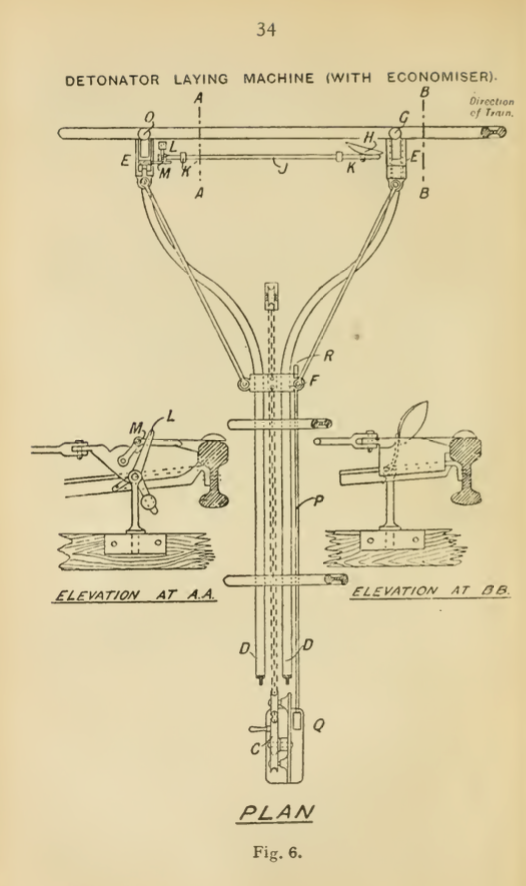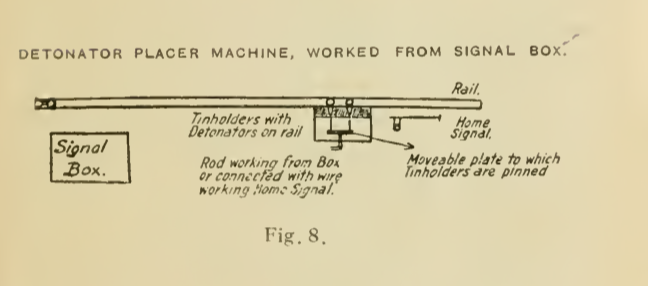Bron: The Railway Signal and Permanent Way Engineer's Pocket Book
Mechanical aids to the placing of detonators with a view to economy of men and material are in use to a considerable extent. These are either worked by the fogman himself or are actuated direct from the Signal Box.
DETONATOR LAYING MACHINES (Fig. 6) Enable a fogman to fog for the signals applying to two or more lines without crossing intervening rails. One form of apparatus known as the "Pinder" is used largely on the Lancashire & Yorkshire and Great Western Railways and consists of a winding wheel with an endless chain in wooden troughing running under the intermediate line or lines and curved slides along which the detonator carriages work to and from the rail. When a detonator is exploded the fogman draws back the carrier and recharges it, but if the signal is lowered, he turns the wheel sufficiently to remove the detonator clear of the rail. An indicator showing when the detonators are on or off the rail is provided at the fogman's end. Another form is the Clayton Fog Signalling machine, which is provided with a magazine at the side of the rail containing a supply of detonators in tin clips. A pair of jaws worked by a lever from the box gives the detonators one by one and places them on the rail or removes them as required.
Bron: The Railway Signal and Permanent Way Engineer's Pocket Book

Figure 6
DETONATOR ECONOMIZERS (Fig. 7).
These machines, which may be used separately or in connection with the detonator-laying machine described above, are designed to avoid the loss involved in the system of using two detonators to ensure one report by utilizing the force of the explosion of the first detonator to with- draw the second one from the rail before the wheel reaches it, while retaining the advantage of keeping a second detonator on the rail to provide against failure or skidding. The apparatus consists of a bar threaded through two eyes on the sleepers and provided with stop and flynut in order to prevent it approaching too near the rail. At one end is a plate fixed at right angles to the rail, and at the other end farthest away from on-coming trains a crank to which a tin holder with a detonator clipped in is swivelled by means of a pin. When the first detonator, which is placed on the rail two inches to the rear of the plate, explodes, it throws back the plate, revolves the crank, and removes the second detonator before the wheels of
the engine reach it. Should the first detonator fail or be skidded, the second will explode, and a new tin holder and detonator has then to be provided.

Figure 7
DETONATOR PLACER MACHINES (Fig. 8).
These are made in various designs and are either worked automatically off the signal wire or by a lever from the signal box. Their function is to place two detonators on the rail in advance of the Home signal when that signal is at"Danger." When not on the railhead the detonators are under cover in an iron casting fixed close to the rail and slightly below rail level.

Figure 8